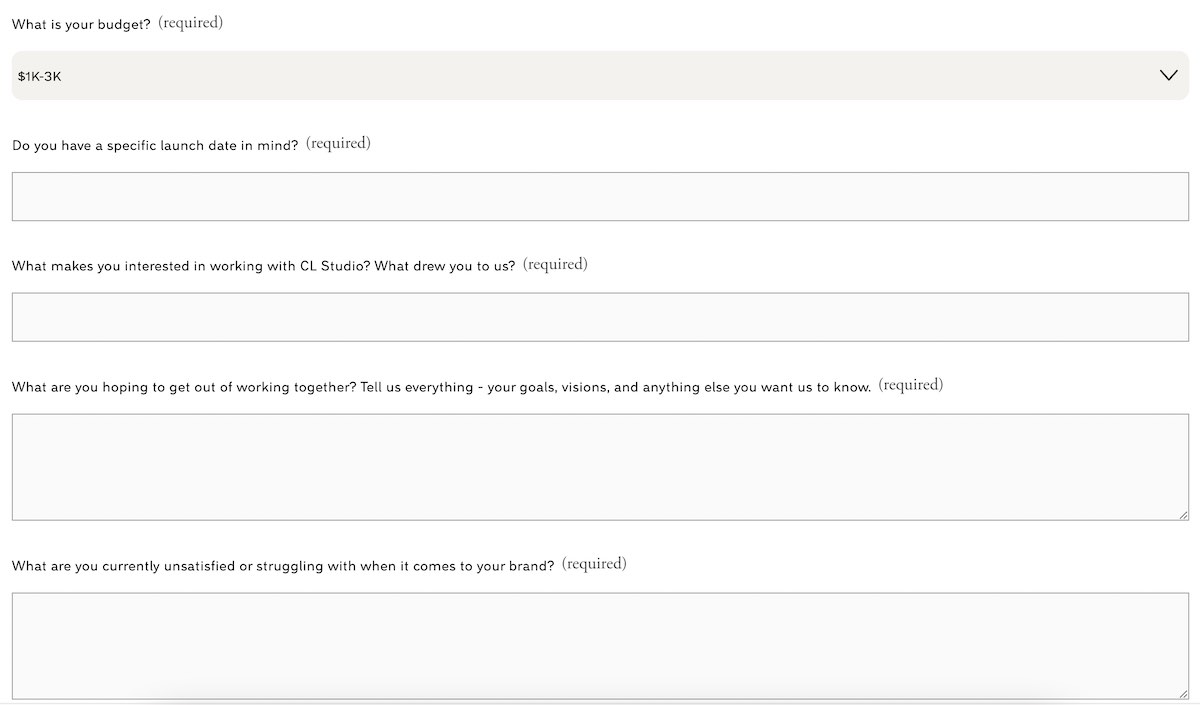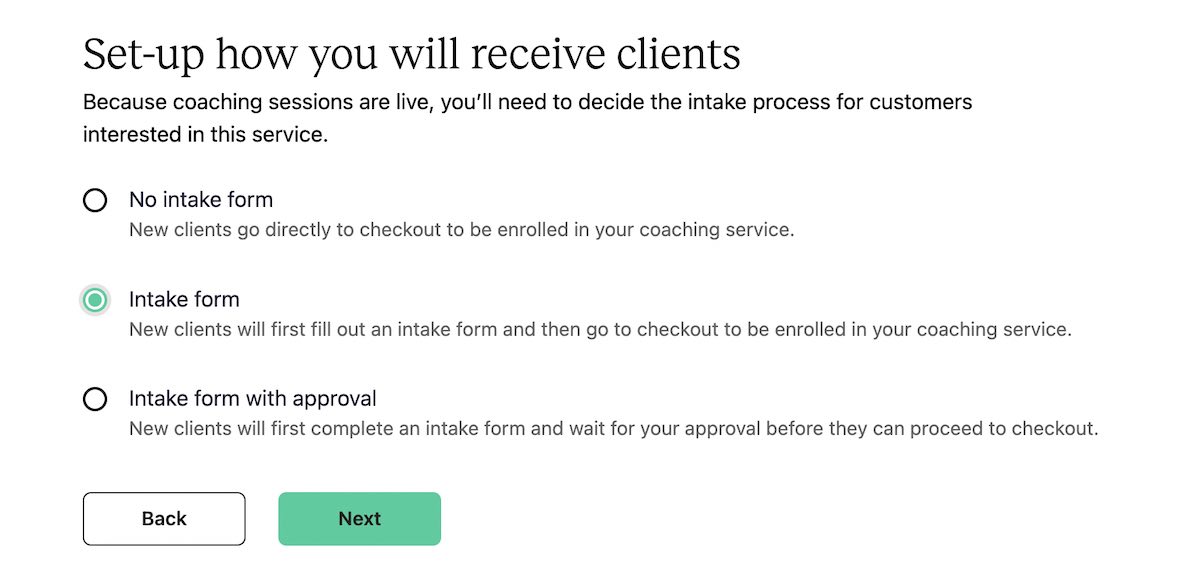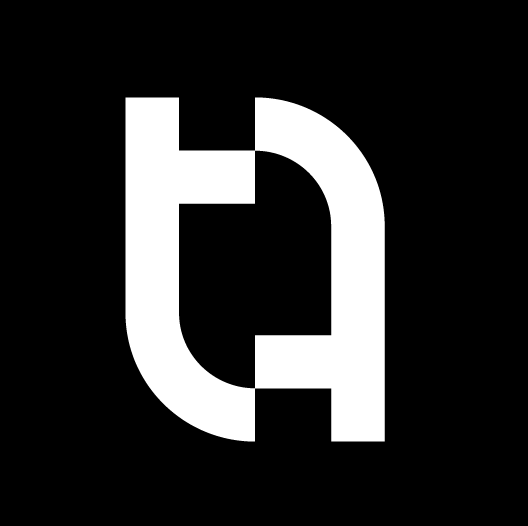Understanding the needs and expectations of your clients is the first step to providing top-notch services. And, if you’re in the online coaching business, a client intake form can help you get to know your prospective clients and help them achieve their goals.
But what does a good intake form look like, and how can you create one that suits your needs? Many coaches use Teachable to manage and sell their services with features like scheduling and intake forms.
We’ll cover everything you need to know about client intake forms. Whether you’re starting a coaching business or want to improve your current client experience, these tips could help you.
What is a client intake form?
A client intake form is a structured questionnaire that collects relevant information from prospective clients or customers before you begin working together. It asks for basic information like their contact details and dives deeper into their needs, goals, and expectations.
Numerous industries use intake forms, and it’s a common step in the client onboarding process. Coaches can use them to evaluate whether a prospective client is a good fit and prepare for their first coaching sessions.
Why should you have a client intake form?
There are many benefits of having a client intake form for online coaching. Here are a few of the biggest reasons why you should consider one for your business.
1. Helps determine client fit
Getting new coaching clients is exciting, but you also want to make sure that it’s the right fit for you and your client. Specific questions in your intake form help you assess whether a prospective client is a good fit for your coaching services. Clients who align with your expertise, goals, and coaching style tend to have a better experience and results.
2. Saves your and your client’s time
When you gather the most important information immediately, you can start coaching faster. You also save time on live coaching sessions because you’ve gotten to know your client a little beforehand.
3. Better prepares you for your first coaching session
You’ll learn about your client’s needs, desires, and goals before your first live coaching session. When you know more about a client before your first session, you can tailor your coaching approach and create a more personalized experience.
4. Builds trust and strong communication
Communication is one of the most important factors in fostering a strong coaching relationship. You can build trust with potential clients from the start by following up with a personalized thank you message. It shows that you review each form and care about your clients.
Client intake form best practices
Although client intake forms are invaluable to coaches, you also need to be mindful of your client’s time and how much information you ask from them. Client intake forms can be useful tools, but there are some best practices to follow.
Here are some tips to help you create intake forms that get responses and get all the details you need to coach effectively.
- Keep it concise: Try to keep the number of questions under five to seven. As a general rule of thumb, the more questions that you have, the less likely people will be to complete a form.
- Include dropdowns or multiple choices: Make it as easy and quick as possible for potential customers to fill out your form. One way to do that is to include dropdown menus and multiple-choice options for general questions like pricing, numbers, and times.
- Use open-ended questions sparingly: For answers that vary greatly from person to person, such as goals or desired outcomes, use open-ended questions.
- Integrate calendars: Integrating your calendar into the intake form can simplify scheduling, eliminate back-and-forth communication, and expedite the booking process. Teachable coaches can connect Calendly to their pages.
- Use clear, straightforward language: Avoid jargon or complex terms that may confuse potential clients. The form should be easily understandable and accessible to all.
- Prioritize relevant information: Tailor the questions to align with your coaching niche and the specific outcomes you aim to achieve with your clients.
- Test and refine: Regularly review and refine your intake form based on client feedback. You may discover questions that you hadn’t thought of asking before.
Examples of client intake forms
Many businesses use intake forms to better understand their prospective clients before jumping on a call, scheduling a demo, or engaging with them in some other way. The client intake form examples below can help you craft your own.
Partnerstack
Partnerstack includes customer testimonials and results within its intake page to incentivize visitors to fill it out. The examples suggest that by using Partnerstack, you could also have similar results.
On the same landing page as your form, include testimonials from past coaching clients on the side. It helps build trust and demonstrates your credibility.

Marketing or design agency
Chloe Leonard runs a branding and web design agency and has a detailed intake form for potential clients.
The form includes questions like:
- What are you hoping to get out of working together?
- Have you ever worked with a designer before?
- What are you currently unsatisfied or struggling with in your branding?
It also includes dropdown menus for questions like: How did you hear about us? What’s your budget? Including dropdowns makes it easier for prospects to complete.

Coaching intake form
Teachable coach and founder of Content Hacker, Julia McCoy tries to uncover client goals and challenges through her form.
The client intake form includes questions like:
- Do you sell products or services?
- What are some of the challenges you’re facing?
- Why do you think we could be valuable to you?
Answers to these questions can reveal obstacles that clients face in achieving their goals. It can also give you ideas on how you can best help them and how to measure your impact.
For example, let’s say you’re an ecommerce coach and your client wants to grow their business and offer new products. But, they’ve struggled with finding reliable manufacturers. You might refer them to ones you’ve used in the past or help them develop a product roadmap.

Intake form questions for coaches
Most coaches include specific questions that relate to their coaching niches. The questions a fitness coach asks clients are slightly different than a career coach because their clients and goals are different.
However, most intake forms have these elements in common:
- Contact basics: Email, phone, name, and other details you need to continue the conversation.
- Logistics: These are often questions around scheduling or pricing.
- Pain points or aspirations: What goal do you hope to accomplish? You may also ask about specific goals that are relevant to your niche. For example, a financial coach might ask a client what their current business revenue is and what they want it to be in six months to a year.
- Challenges: Identify the obstacles that have hindered your clients from reaching their goals. This insight allows you to tailor your coaching approach and develop strategies to overcome these challenges.
Intake form template
Besides these basic elements, here are a few sample questions you can steal for your client intake form:
- What are the top three goals you hope to accomplish through coaching?
- How do you envision your life or business transforming after achieving these goals?
- What specific areas or skills would you like to focus on during our coaching sessions?
- Are there any limiting beliefs or mindset blocks that have impeded your progress?
- How do you prefer to receive feedback and support during the coaching process?
- Have you previously worked with a coach? If so, what was the most beneficial aspect of that experience?
- What resources or tools do you currently utilize to support your personal/professional growth?
- What motivates and inspires you to invest in coaching at this stage of your journey?
- Are there any specific expectations or outcomes you have from our coaching relationship?
- How do you handle and adapt to challenges or setbacks?
How to create a client intake form in Teachable
Teachable’s user-friendly platform makes it easy to create and manage coaching services. You can quickly create an intake form through the platforms with these steps.
1. Create a coaching product
First, you’ll create a coaching product in Teachable. Once you click “Create Coaching”, we’ll walk you through the process.
There are five steps to creating a coaching product. The first step is to name your service and the second step is to decide if you’ll use a client intake form or not.

2. Select intake form
In the second step, you’ll choose an intake form flow for your coaching product. This will determine how you accept new coaching clients. Select one of the following options to add a form:
- Intake form: Clients complete an intake form and go to checkout.
- Intake form with approval: Clients fill out an intake form and await your approval before checkout.

3. Edit or customize your intake form
Within Teachable’s platform, you can customize your form to suit your business and branding. You can adjust the text, submit button, colors, and style.
Follow these simple steps to add and edit your form:
Click the “Pages” tab and select the intake form you want to edit.

Hit edit and go to the “Sales Page” editor. It will list different blocks on the page. You’ll select the intake form block.

Here, you can adjust the content. To customize the look of your forms, you’ll click the “Design” tab. Then hit “Update” to save your changes.
You can also add more questions. However, limit the number of questions to five to seven to encourage more form submissions.

Start coaching with Teachable
A well-designed client intake form is a powerful tool for gaining valuable insights into prospective clients. With these tips and examples, you can create a client intake form that streamlines your onboarding process, provides valuable insights, and sets the stage for a successful coaching relationship.
Teachable can help you launch your own coaching business or venture into online courses, digital downloads, and more. Sign up for a free plan today to get started.
FAQs
How do you create a client intake form?
Creating a client intake form involves designing a structured questionnaire that gathers relevant information from prospective clients.
To create one, consider using a form builder tool or utilize the free template and built-in intake form feature in platforms like Teachable. Customize the questions to align with your coaching services, focusing on client suitability, goals, and challenges.
What does an intake form include?
An intake form typically includes contact information (name, email, phone), logistical questions (scheduling preferences, pricing ranges), pain points or aspirations (goals, challenges), and any additional information specific to your coaching niche. The goal is to gather essential details and prepare for effective coaching sessions.
Join more than 150,000 creators who use Teachable to make a real impact and earn a real income.



%201%20(1)%20(1).png)



